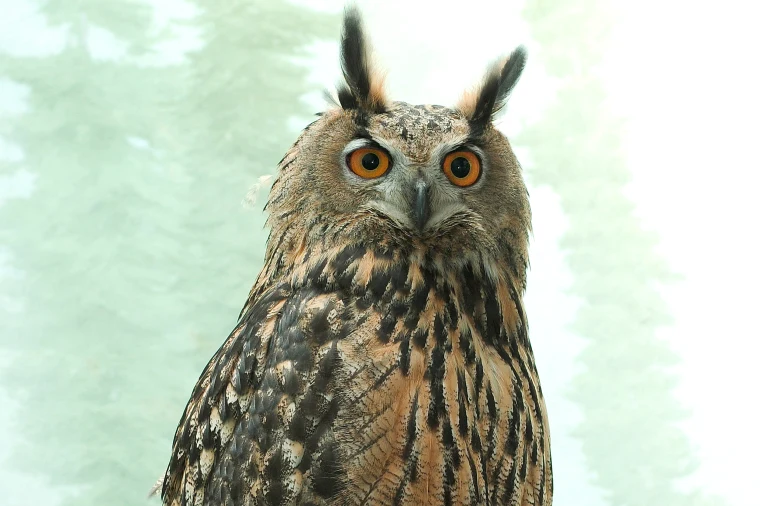Birds and Windows

There’s mourning in New York today. Flaco, the Eurasian eagle-owl that escaped from the Bronx Zoo last year and became a spectacle in Central Park, has died after flying into a window. This is a good moment to note that upwards of one billion birds a year die due to flying into glass. The birds can’t see it, they have hollow bones, and it just breaks their necks. Even household windows can be an issue; I once had a dead hawk below my house. But commercial glass buildings are the biggest culprit. They are just slaughterhouses of birds. Even you and I can do more to protect birds though. So maybe we should learn a bit more about how:
Start by identifying dangerous windows, including large picture windows, paired windows at right angles to each other, or windows with feeders outside. Go outside and look at your windows from a bird’s point of view. If you see branches or sky reflected in or visible through the glass, that’s what the birds will see, too. Past recommendations about safe distances for feeders outside windows are no longer thought to be valid, Sheppard says. “If you’ve got windows near a bird feeder, you should make them bird friendly and don’t worry about how far away they are.”
Treatments For Existing Windows
To deter small birds, vertical markings on windows should ideally be spaced in a 2-inch by 2-inch grid. (This will safeguard the windows for even the smallest birds such as hummingbirds, gnatcatchers, siskins, kinglets, and the like.) All marking techniques should be applied to the outside of the window.
- Tempera paint or soap. Mark the outside of the window with soap or tempera paint, which is inexpensive and long lasting. You can use either a grid pattern of 2 inches by 2 inches (see above), or get creative and paint patterns or artwork on your window.
- Decals. Put decals, stickers, sun catchers, mylar strips, masking tape, or other objects (even sticky notes) on the outside surface of the window. These are only effective when spaced very closely (see above). Note that hawk silhouettes do little to deter birds. Remember: placing just one or two window stickers on a large window is not going to prevent collisions—they must cover most of the glass with the spaces between too narrow for birds to fly through.
- Dot Patterns and Tape. Long-lasting tape products offer an easier way to apply the correct spacing of dots across your window. Products such as those available at Feather Friendly work well in preventing collisions.
- Acopian Bird Savers. Also known as “zen curtains,” these closely spaced ropes hang down over windows. They do the work of tape or decals but are easier to install and can be aesthetically pleasing. They are highly effective and are the method we use to safeguard windows at the Cornell Lab headquarters. You can order them to fit your windows or make your own.
- Screens. Installing mosquito screens over your windows is very effective, as long as they are on the outside of the window and cover the entire surface.
- Netting. Cover the glass on the outside with netting at least 3 inches from the glass, taut enough to bounce birds off before they hit. Small-mesh netting (around 5/8″ or 1.6 cm) is best, so that birds don’t get their heads or bodies entangled but will bounce off unharmed. You can mount the netting on a frame, such as a storm-window frame, for easy installation and removal.
- One-way transparent film. Products such as Collidescape permit people on the inside to see out, but makes the window appear opaque on the outside. They can reduce the amount of light that comes in your window (this can also reduce your cooling costs), according to Sheppard.


